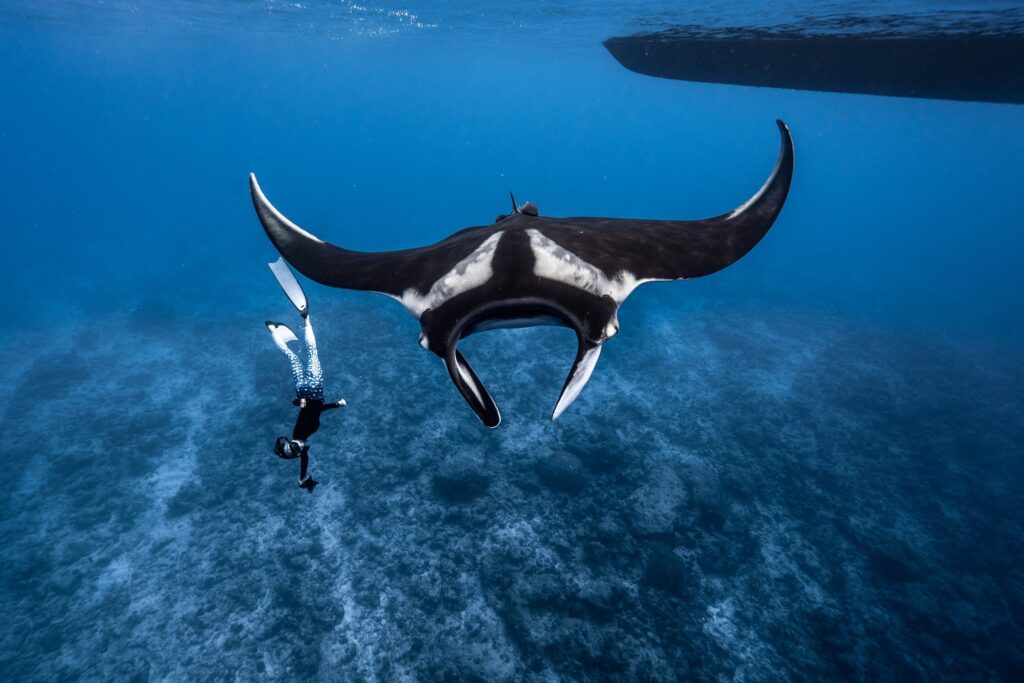Everything You Need to Know About Manta Rays in the Maldives

The Maldives is one of the best places in the world to encounter majestic manta rays. With crystal-clear waters, thriving coral reefs, and an abundance of plankton, these gentle giants flock to Maldivian atolls year-round. Whether you’re a diver, snorkeler, or marine life enthusiast, this guide covers everything you need to know about manta rays in the Maldives—from the best spots to see them to fascinating facts about their behavior.
Why Are Manta Rays in the Maldives?
Manta rays are drawn to the Maldives due to its nutrient-rich waters, which attract vast amounts of plankton—their primary food source. The country’s unique atoll formations create cleaning stations where mantas visit to have parasites removed by smaller fish.
Key Reasons Manta Rays Love the Maldives:
✅ Abundant plankton blooms (especially during monsoon seasons)
✅ Protected marine areas (like Hanifaru Bay, a UNESCO Biosphere Reserve)
✅ Year-round sightings (though peak seasons vary by region)
Best Places to See Manta Rays in the Maldives
While mantas can be spotted across the archipelago, some locations offer guaranteed encounters.
1. Hanifaru Bay (Baa Atoll) – The Manta Hotspot
- UNESCO Biosphere Reserve
- Best time: May–November (peak season for feeding frenzies)
- Snorkeling only (diving is prohibited to protect the ecosystem)
2. Ari Atoll – Year-Round Manta Action
- Famous for cleaning stations (Manta Point, Rangali Madivaru)
- Best time: December–April (west monsoon) for the western side, May–November (east monsoon) for the eastern side
3. Addu Atoll – The Southern Gem
- Less crowded, with resident manta populations
- Best time: Year-round, but especially good in the dry season (December–April)
4. North Malé Atoll – Easy Access from the Capital
- Sites like Lankan Manta Point and Hulhumalé Reef
- Best time: December–April
When Is the Best Time to See Manta Rays?
Manta rays can be seen year-round, but their locations shift with the monsoons:
| Season | Best Atolls | Activity |
|---|---|---|
| Dec–Apr (NE Monsoon) | Ari Atoll (west), North Malé | Cleaning stations, mating trains |
| May–Nov (SW Monsoon) | Baa Atoll, Ari Atoll (east) | Feeding aggregations in Hanifaru Bay |
Manta Ray Behavior & Fun Facts
🔹 Giant vs. Reef Mantas: The Maldives hosts both species—giant oceanic mantas (up to 7m wingspan) and reef mantas (3–4m).
🔹 Intelligent & Curious: Mantas have the largest brain-to-body ratio of any fish and often interact with divers.
🔹 Unique Spot Patterns: Each manta has a distinct belly pattern, like a fingerprint, used for identification.
🔹 Long Lifespan: They can live up to 50 years, but reproduce slowly (1 pup every 2–5 years).
How to Swim with Manta Rays Responsibly
- Keep your distance (avoid touching or chasing them)
- Use reef-safe sunscreen to protect their habitat
- Avoid flash photography (can startle them)
- Follow local guidelines (e.g., no diving in Hanifaru Bay)
Final Thoughts
The Maldives is a manta ray paradise, offering unforgettable encounters in some of the world’s most pristine waters. Whether you visit Hanifaru Bay for a feeding spectacle or explore Ari Atoll’s cleaning stations, seeing these graceful creatures is a bucket-list experience.
Ready to dive in? Book a manta ray snorkeling or diving excursion and witness these ocean giants in their natural habitat!
